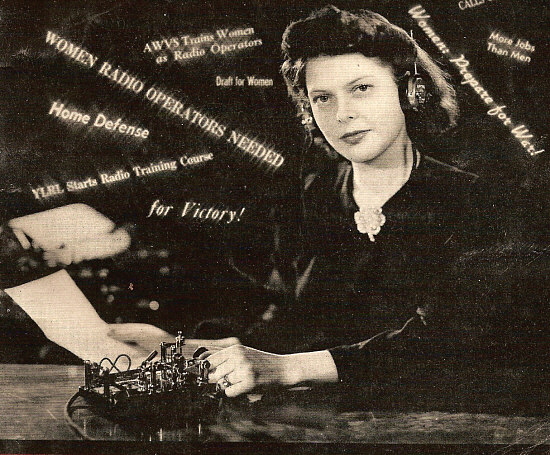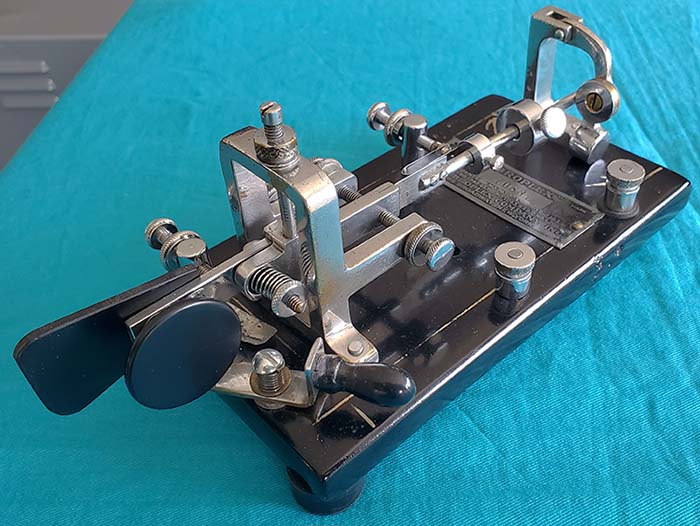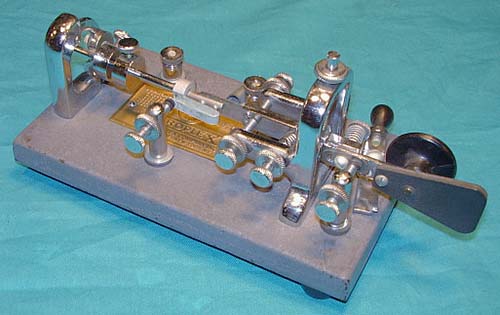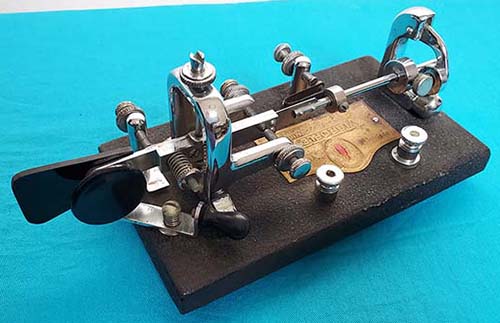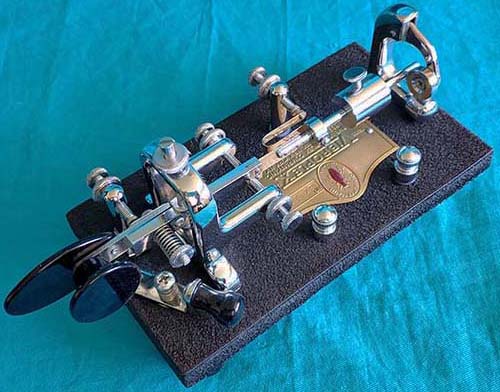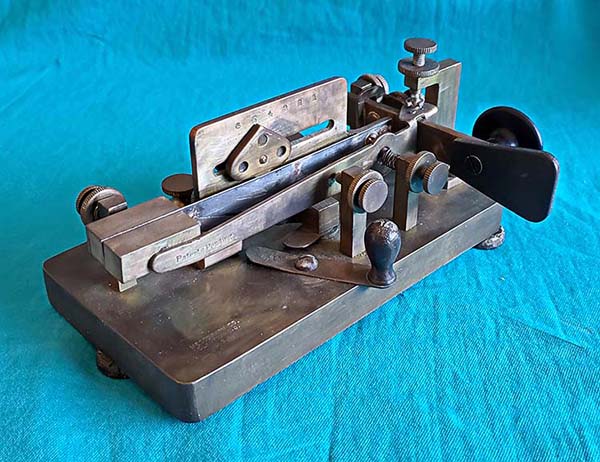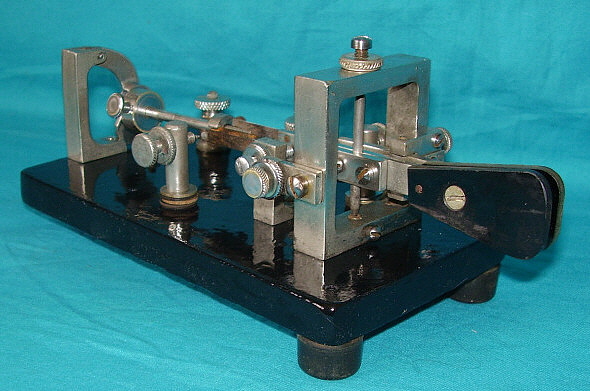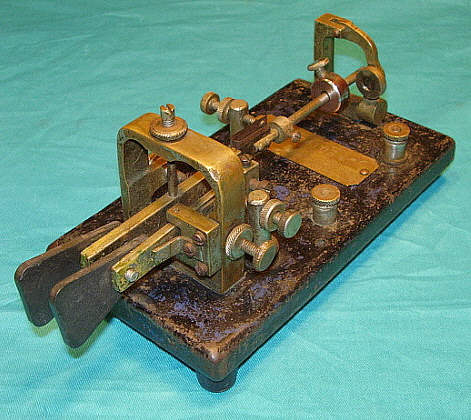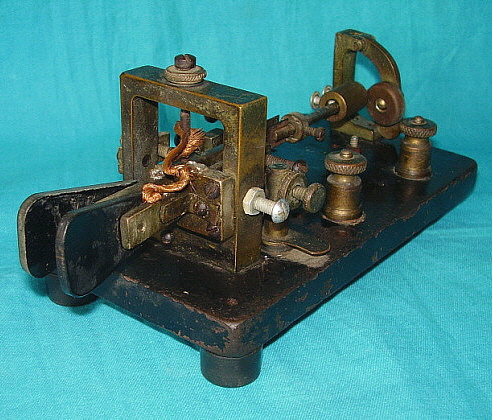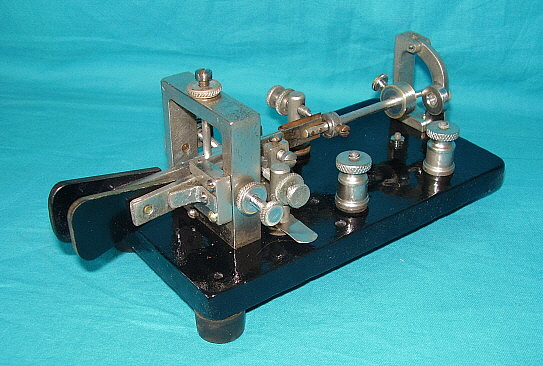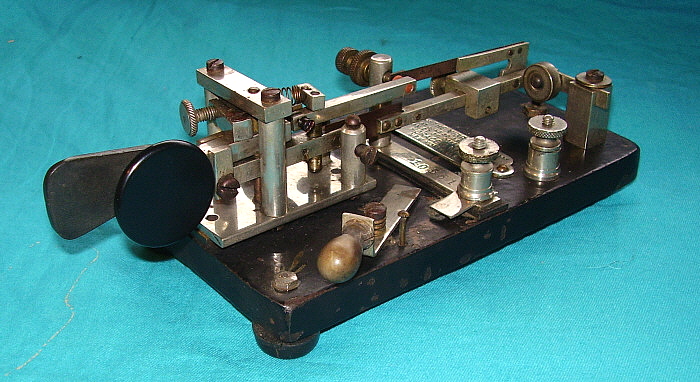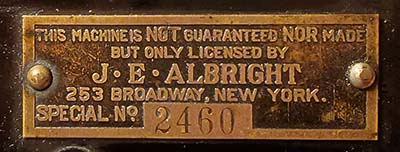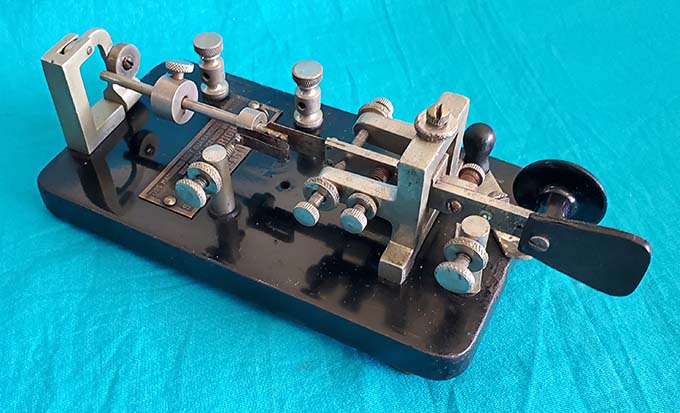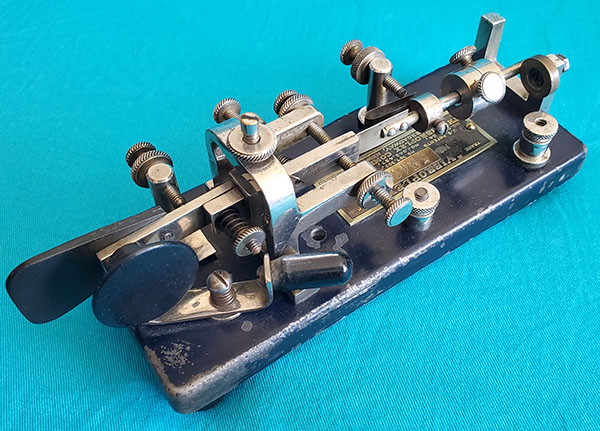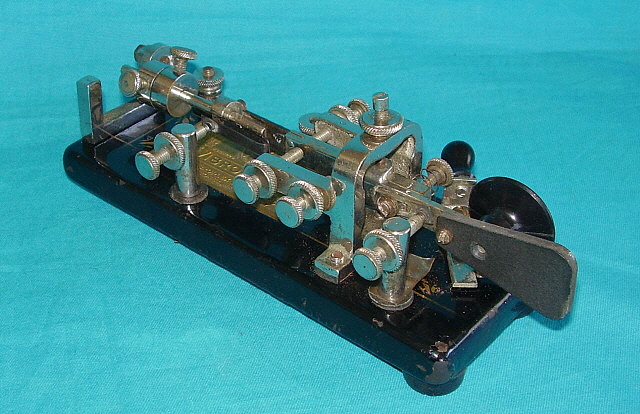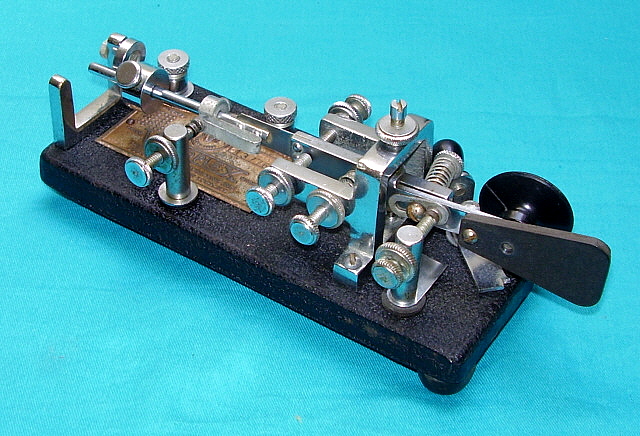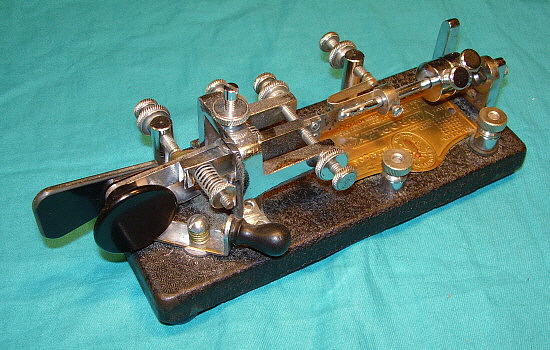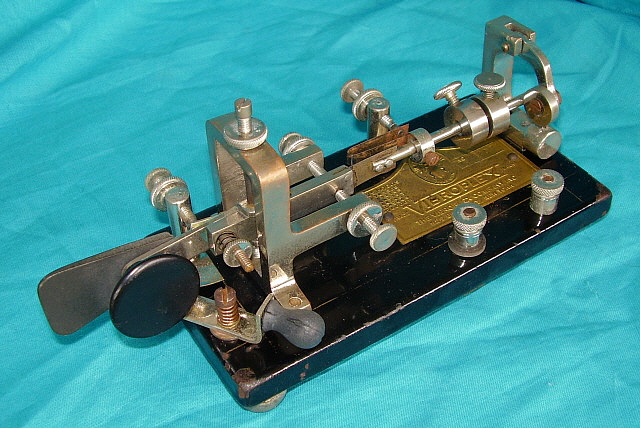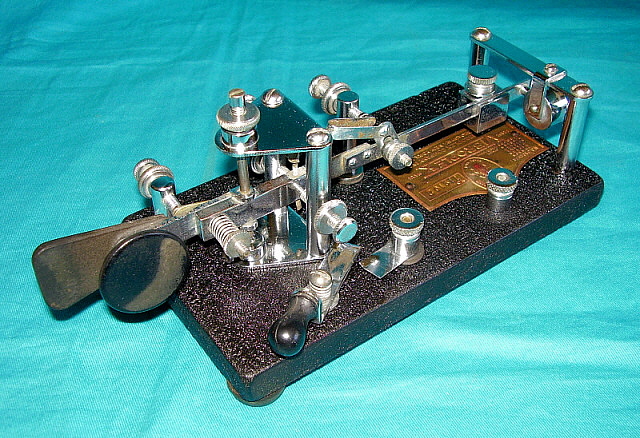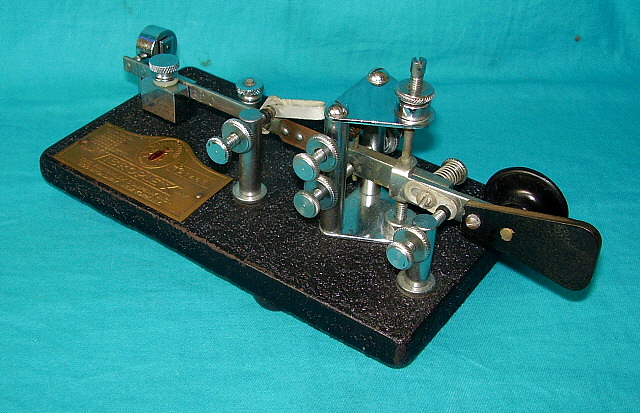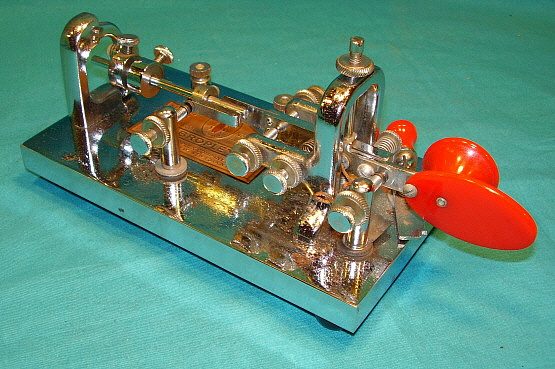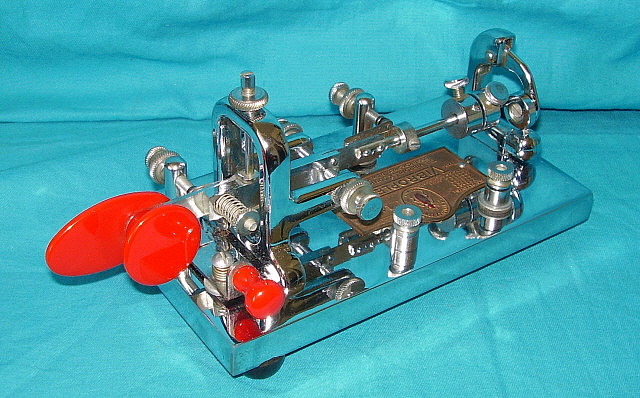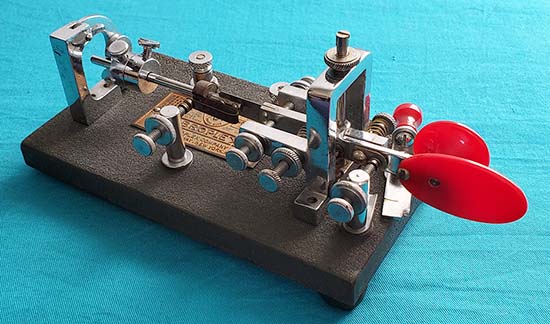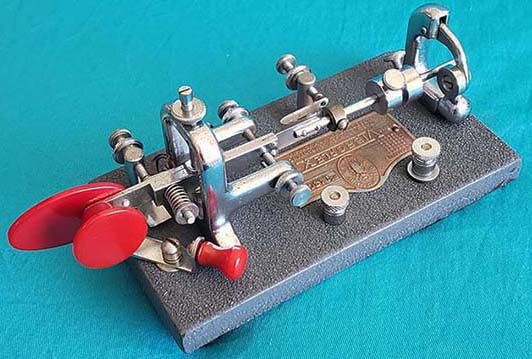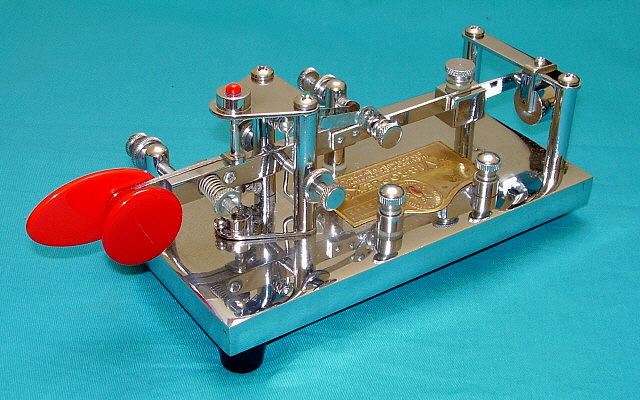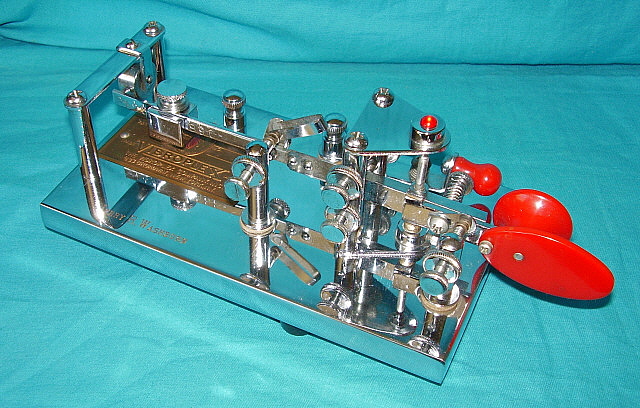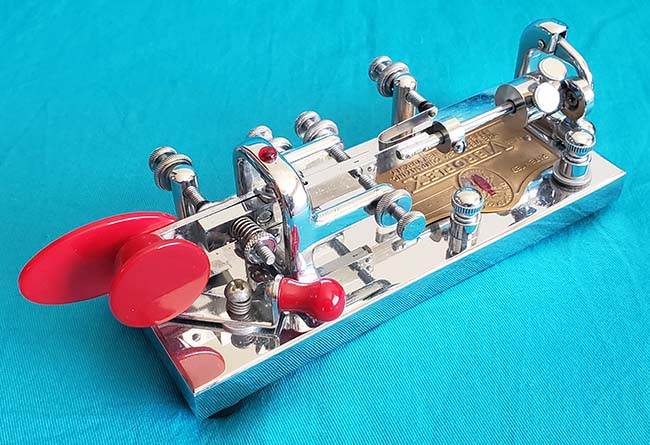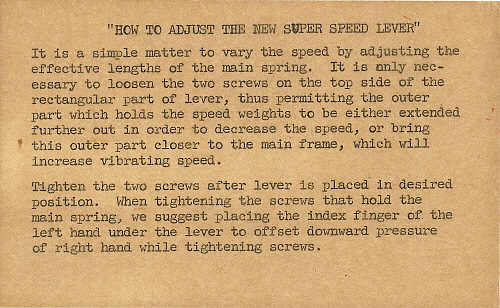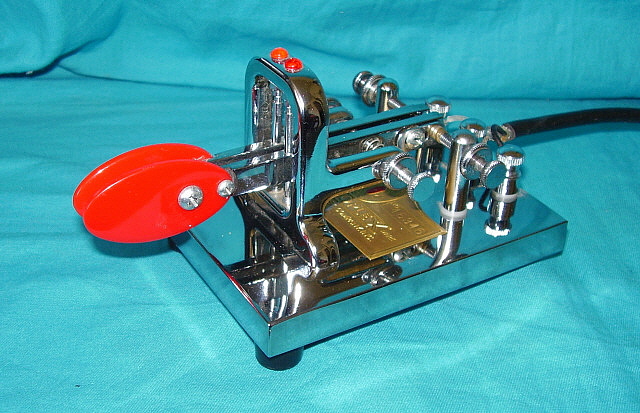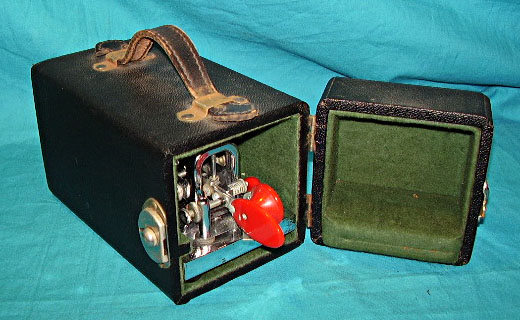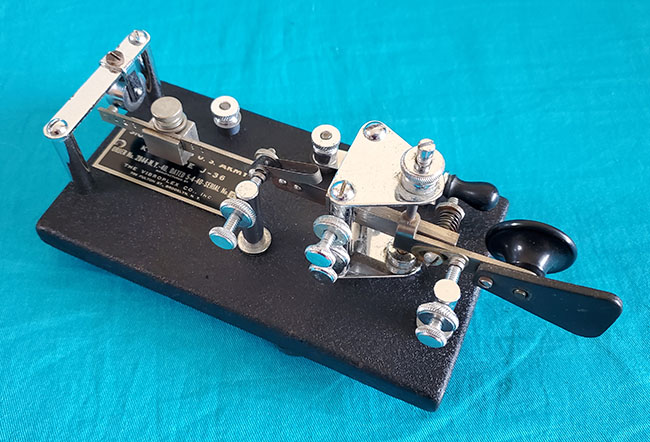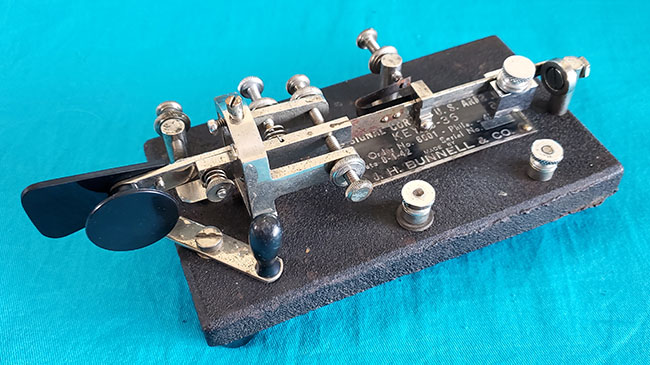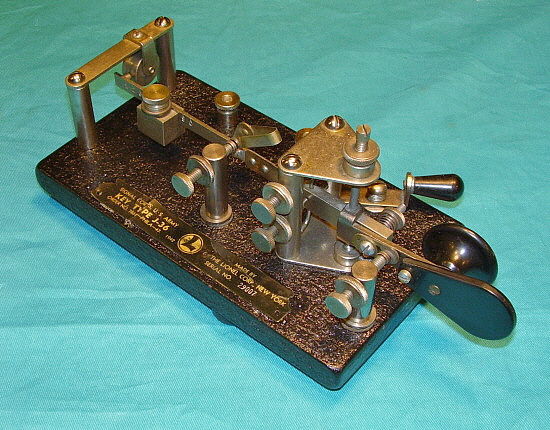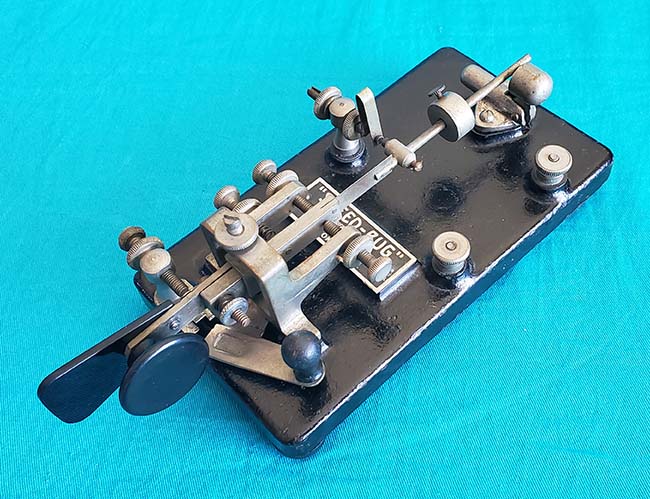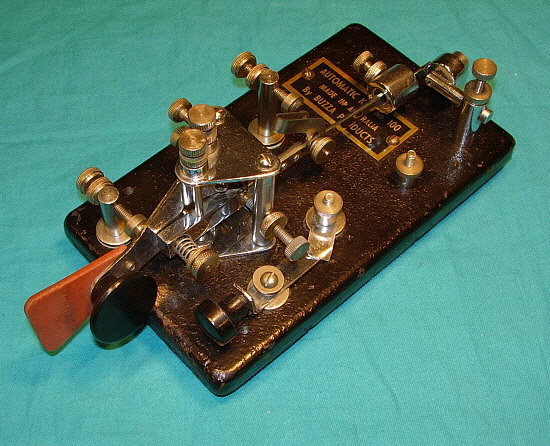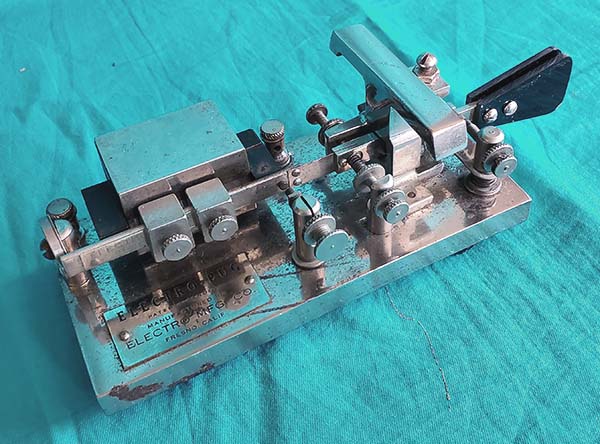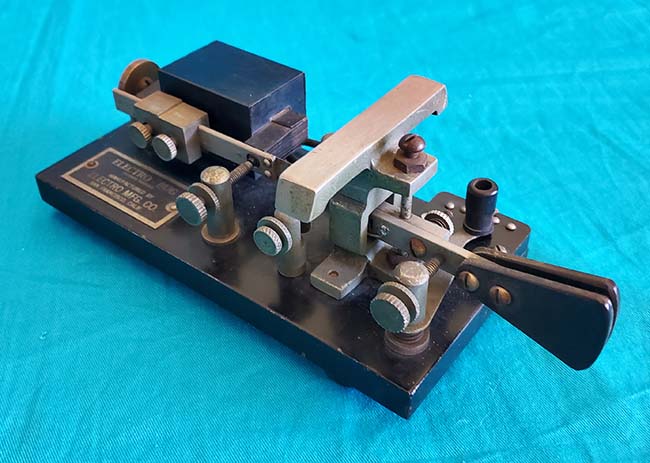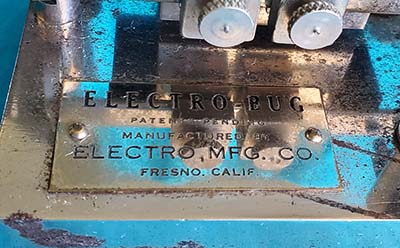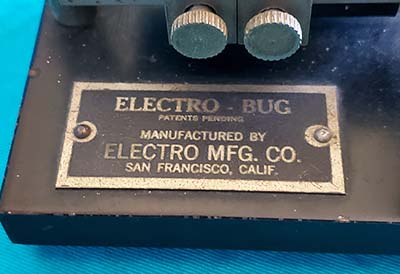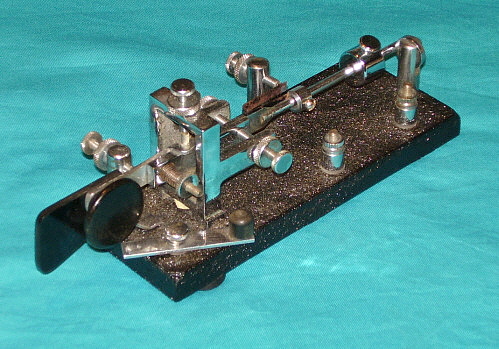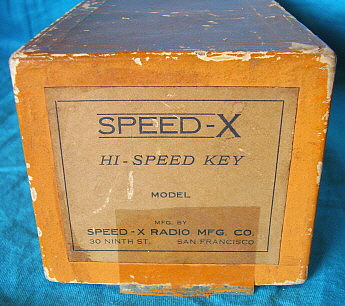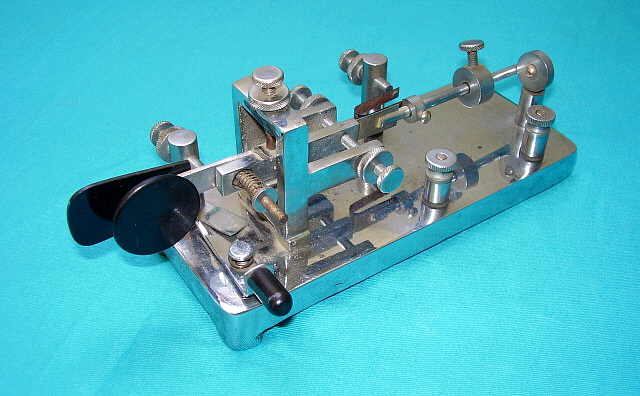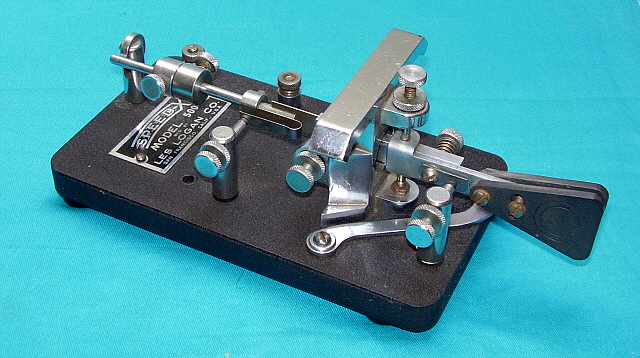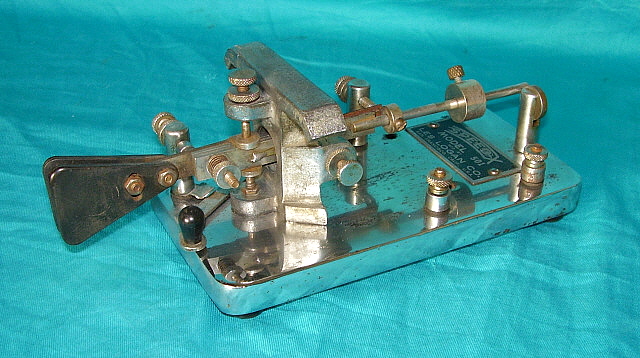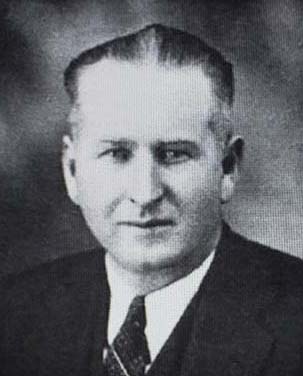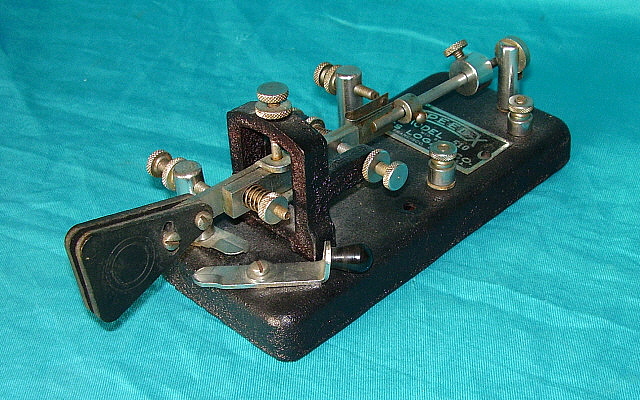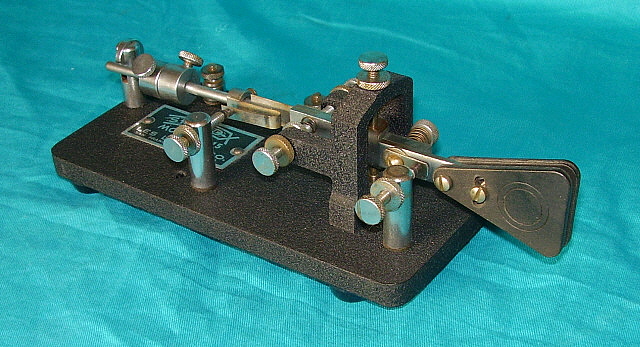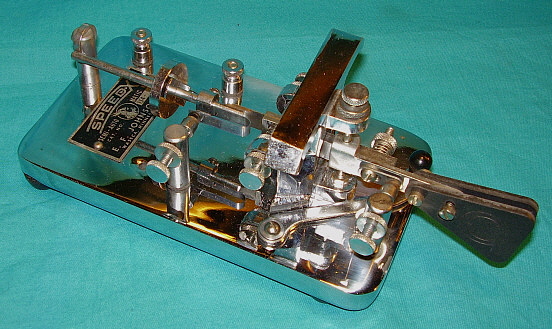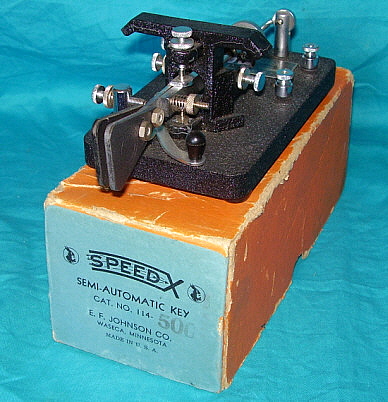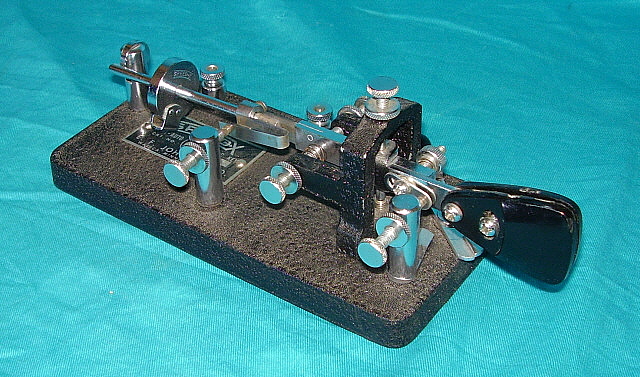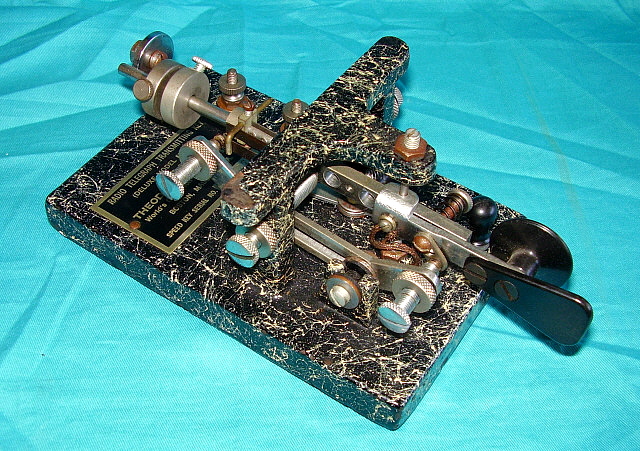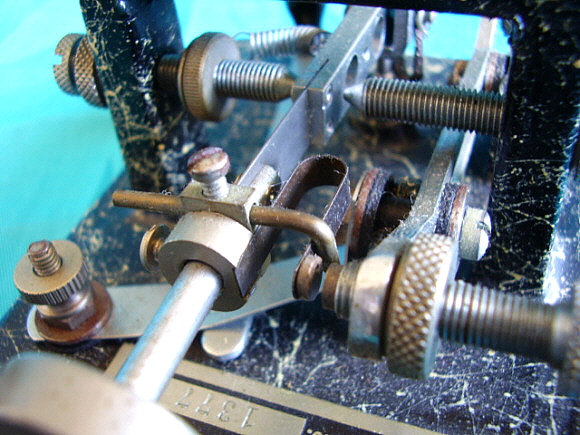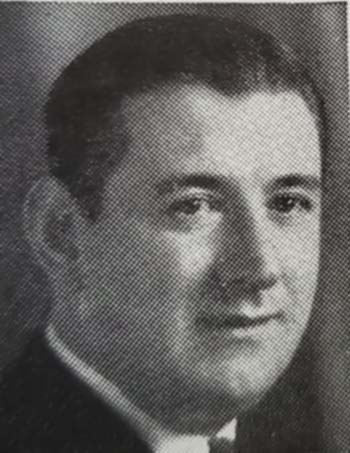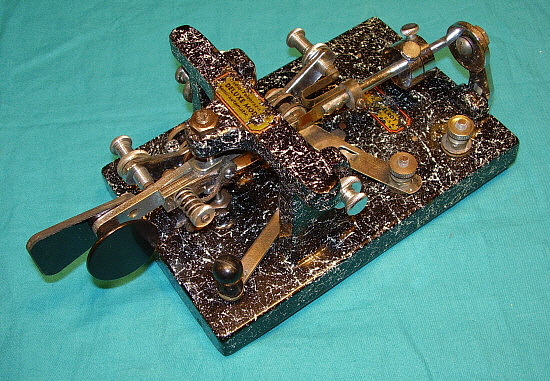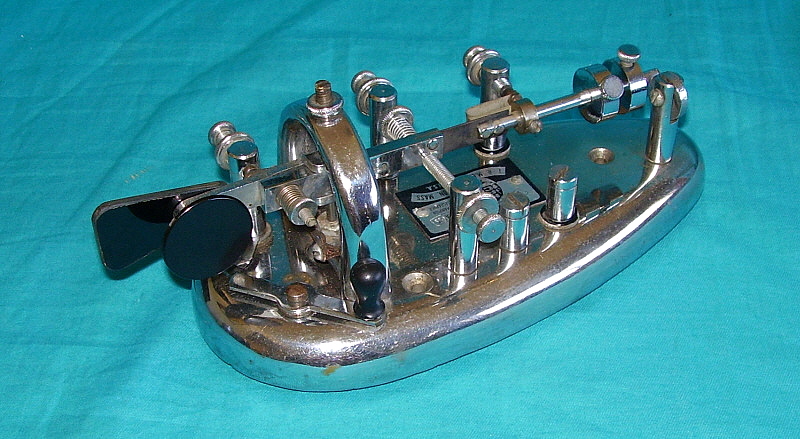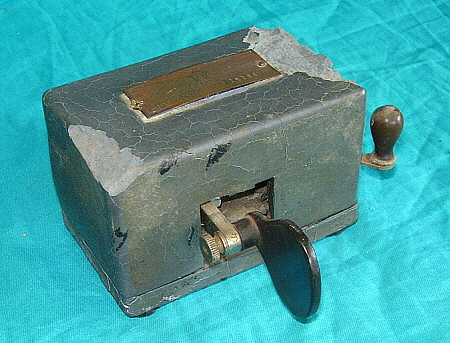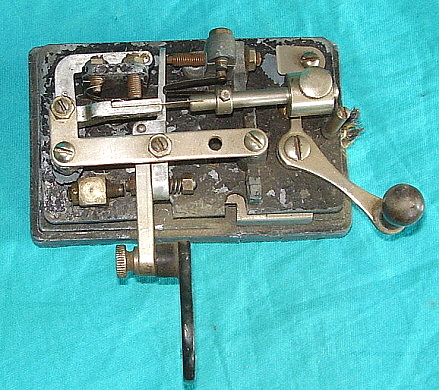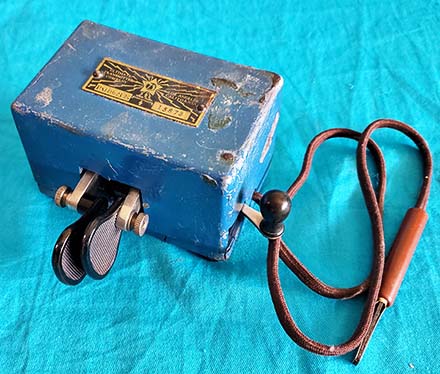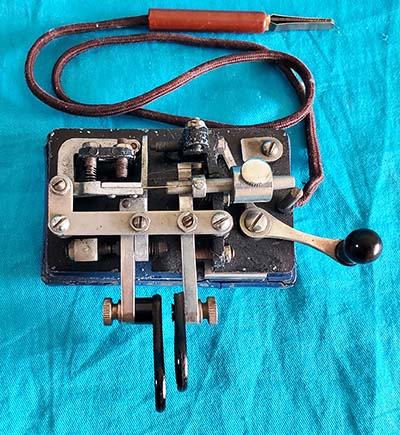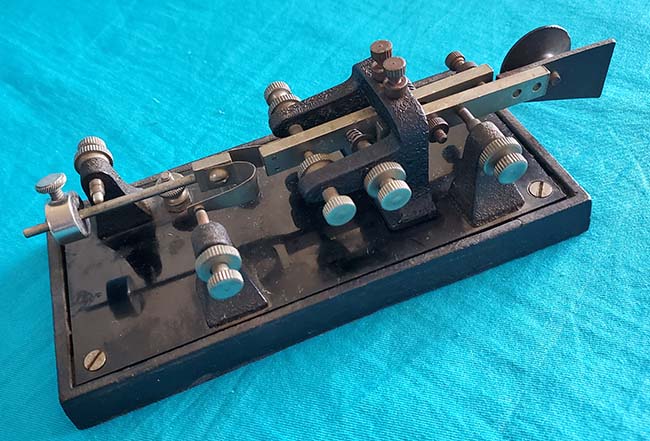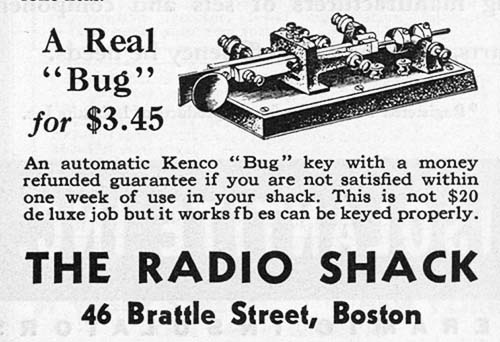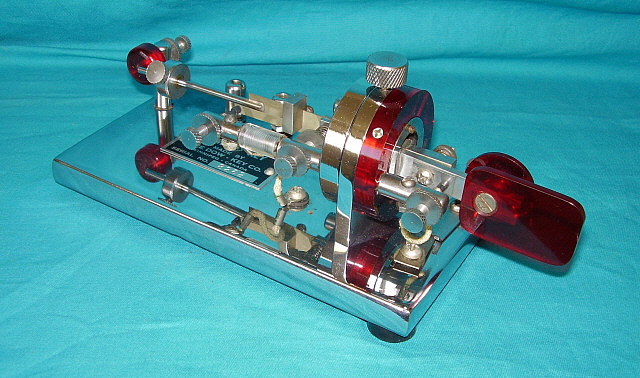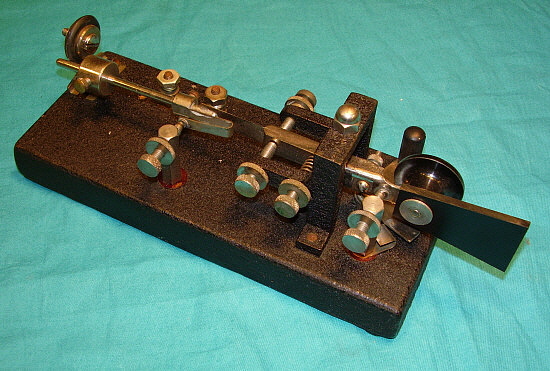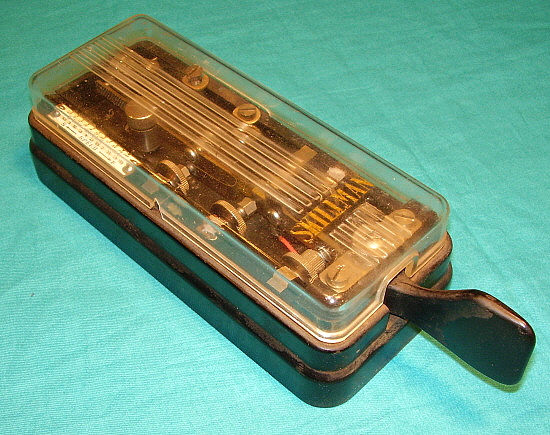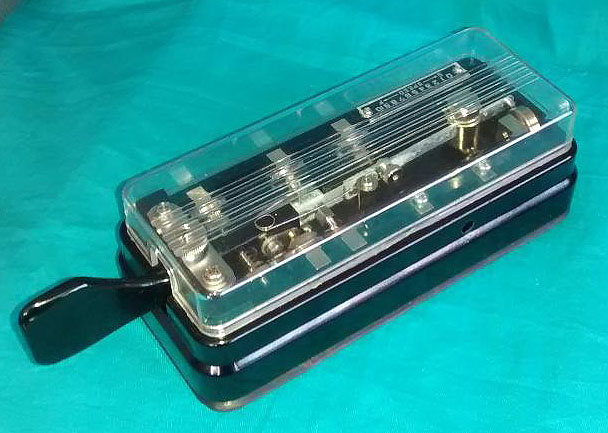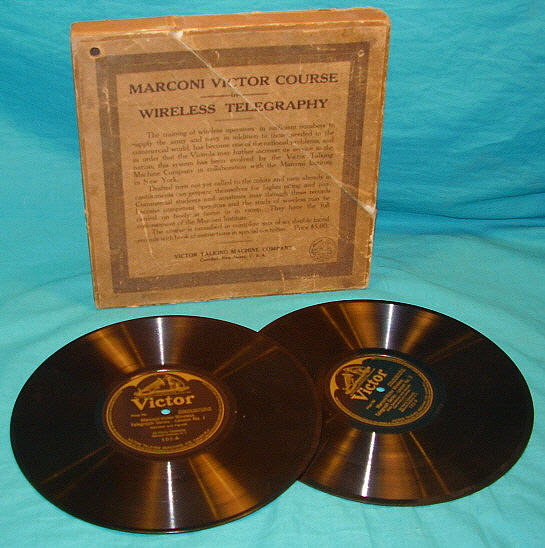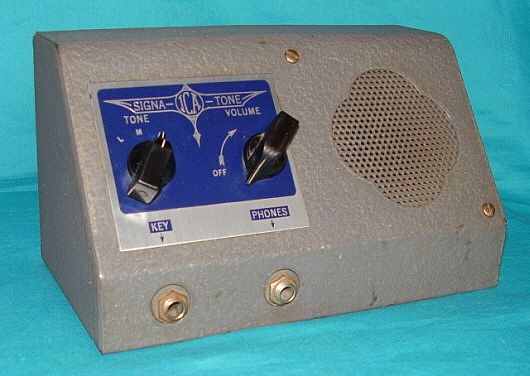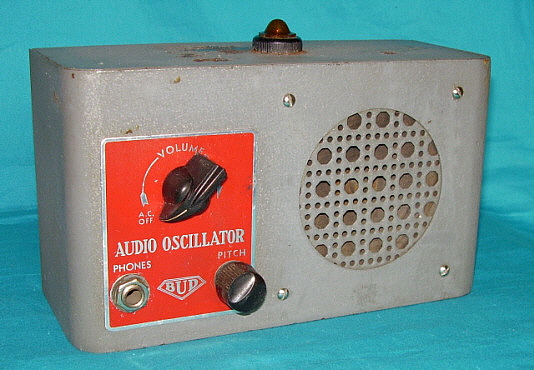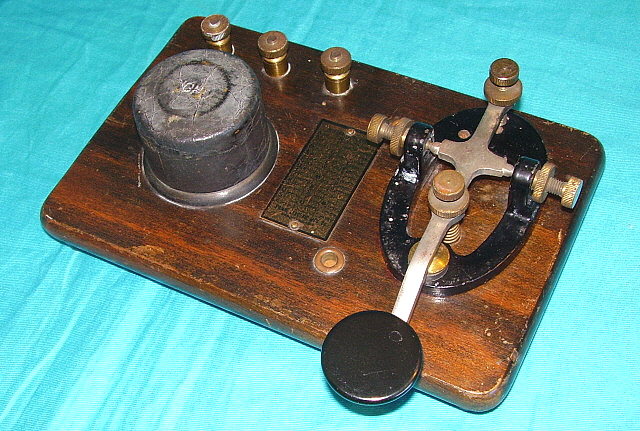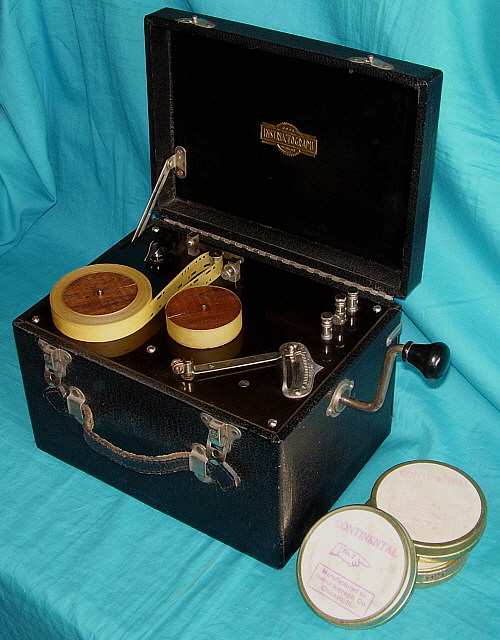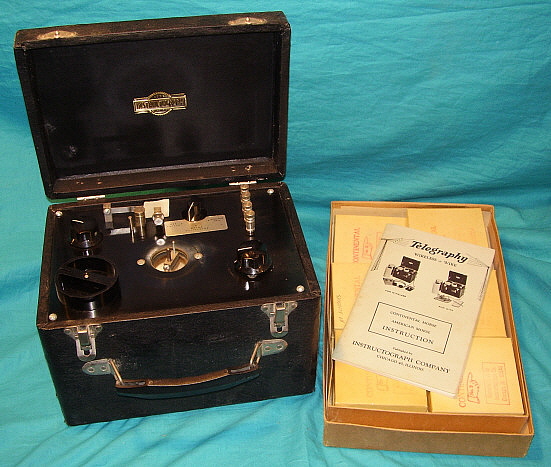|
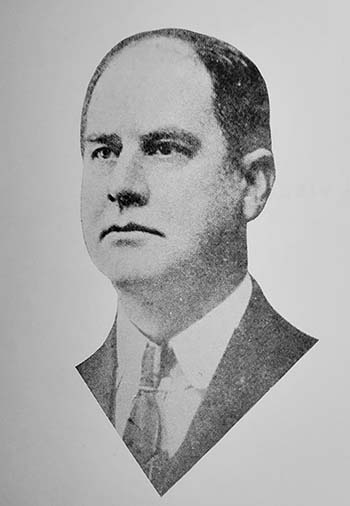
Horace G. Martin
|
Vibroplex Company History
Horace G. Martin
was the earliest of the bug manufacturers, producing the Autoplex
semi-automatic keys in 1903. The Autoplex used battery-operated
solenoids to power the dot stream but dashes were produced manually. In
1904, Martin developed the basic idea for all "modern" bugs - the
"Vibroplex" which utilized a horizontal, weighted, swinging
pendulum to create a dot stream with manual creation of dashes, although
a somewhat similar, earlier patent filing had been submitted by William
O. Coffe
(owned by Mecograph Co.)
The patent for the Martin's Single Lever was granted in 1904. Coffe's
patent had been filed almost four months earlier than Martin's.
However, Coffe's patent processing was delayed for two years because of
questionable claims and vague mechanical drawings used in his application. Coffe's patent was
granted in 1906. Martin's Single Lever was the first (or
earliest) model "bug" offered for sale. Later, in 1907,
Benjamin Bellows (Mecograph's owner) sued Martin and lost the initial suit,
however in the 1908 appeal, the court handed Mecograph a victory,...of sorts.
Mecograph claimed 12
infringements by Martin but the court only granted them their "Claim #11"
- the mechanically energized swinging pendulum. The court rulings were conflicting because the
initial finding claimed that Martin's Autoplex used a swinging pendulum
giving him priority (Martin's Autoplex patent application even uses the
terms "pendulum" and "weight" in the description.) The later court's finding was that the Autoplex
needed a
secondary power source (a battery) to operate where Coffe's pendulum
operation was entirely mechanical. Obviously, the second court thought that both
the Martin Vibroplex and Coffe Mecograph
were using an entirely mechanical weighted
swinging pendulum for dot formation and therefore Coffe's submission for
a patent proceeded Martin's in that one aspect alone. However, because
of the precise patent drawings and the mechanical design of Martin's key
was so far advanced beyond that of Coffe's amateur contraption (along with
the earlier ruling that Martin's Autoplex with its
concept of using a
weighted swinging pendulum proceeded Mecograph's claim,) the court's ruling
didn't enforce any capitulation on Martin's part. Since the court
essentially gave Martin the "go ahead," he continued to
build his Vibroplex keys.
"Vibroplex"
and "Autoplex" keys were originally sold through United Electrical Manufacturing Co. in
New York. U.E.M. was formed in February 1904 by several individuals,
including Edward Buchanan and Horace Martin. Most of U.E.M.'s time was
spent in court, however they handled most of the sales of the Autoplex
and the Single Lever. Although U.E.M. had started in New York, they
ended up moving to Norcross, Georgia. Martin lived in Norcross during
this time. The parts for these keys were made elsewhere as U.E.M. was
just an assembly operation.
The U.E.M. Company failed in 1908.
After 1908, Martin moved back to New York City and continued to build
keys in his own workshop (probably in Brooklyn.) |
|
Ultimately, Martin partnered with James E. Albright in
1911. Albright sold "Martin's Vibroplex" keys initially as an agent as there was
no specific company at that time. Martin was not a businessman, he left
that to Albright. Martin was the inventor and spent all of his time in the
shop.
Albright was aggressive at defending Martin and his Vibroplex. He was successful in obtaining all other applicable patents to the Vibroplex (if not already assigned to Martin)
when he purchased the Mecograph Company in 1913 from founder Benjamin
Bellows' widow, Nellie Bellows. The purchase of Mecograph included
Coffe's patent and therefore freed Martin-Albright from any further litigation since they
now owned all of the patents. However, it didn't stop the many other
companies that were building "knock-off" imitation Vibroplex keys.
Albright won a suit
against Max Levey (ATOZ Elect. Novelty Co.) over ATOZ's blatant "Single Lever" copy
called "The Improved Vibroplex" in March 1914. After
that ruling, all Vibroplex "knock-offs" had to be licensed (by Albright) or the user
(along with his employer) could be held
liable for "unlicensed use." Albright sold the licenses for $2
and the licensee had to have a special metal tag affixed to their non-Vibroplex
key in order to avoid threatened prosecution. Licenses were sold through
1914 up to the formation of the Vibroplex Company in 1915.
Martin had designed the Single-Lever (Original,) the
Double-Lever, the Direct-Point (Model X) and the No. 4 (Blue
Racer) by the time
"The Vibroplex Company" was officially formed,
in 1915, with James E. Albright as president.
Between 1915 and 1920, Martin designed the
Vertical (Upright) and the Midget.
Martin left Vibroplex in 1920
when he was "bought out" by Albright for a little under $7000. Martin had
a ten-year "non-competition" clause in the arrangement but continued to offer
improvements to Vibroplex and after the ten-year period expired provided
collaborations with other key manufacturers thru his sons' company,
Martin Research & Mfg. Co. After Martin's departure, Vibroplex
introduced an Original with a reduced base size and with
increased contact size bug that became known as the Junior
(1921.) The
No. 6 or Lightning Bug was introduced in the mid-twenties. The
Champion came along in 1939. These post-Martin keys were
designed by John LaHiff.
Vibroplex continued on
supplying bugs to telegraphers, hams and even the military. Vibroplex
started building J-36 bugs, which were essentially copies of the
Lightning Bug, for the Signal Corps in 1936. Actually, a small company
called Brooklyn Metal Stamping Co. built the first J-36 bugs in the
early thirties (based on their "Speed-Bug.") Demand for
the J-36 bug was so high during WWII contracts were also awarded to the Lionel
Corporation to build the quantity of keys that were required. The J. H. Bunnell
Company also built J-36 keys during WWII (as did the Australian company, Buzza.) |
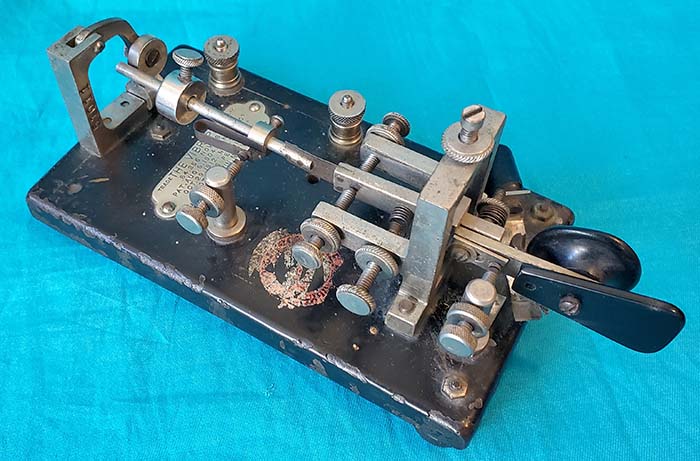 |
| photo above: This is a Single-Lever that was
built before the Vibroplex Company was formed. It's
more-or-less typical of the early Single-Lever in that
it has the nickel-plated data plate with patent numbers
and dates
along with Horace Martin's name and "TRADE
THE VIBROPLEX MARK" as
the key identification. The serial number on these
early, pre-Vibroplex Company Single-Lever bugs was stamped into the
damper frame. In this case, the serial number 51011
dates from 1914. Also of note, the "J.E.
Albright - Vibroplex" decal that was applied to bugs
starting around 1914 to 1915 is still present on this key, a
little worn, but still readable. |
|
In 1947, J.E.
Albright passed the presidency of Vibroplex to his brother, W.W.
Albright. John LaHiff had been with the company for many years and
designed several keys, specifically the Lightning Bug and the Champion
(and probably the Zephyr.) LaHiff became the new owner of Vibroplex in 1965.
Upon his death in the early seventies, his son took over but he eventually
sold Vibroplex to Peter Garsoe in 1978. Garsoe moved Vibroplex from New
York to Maine where Garsoe had other business interests. Around 2000, the Vibroplex company was
sold to Mitch Felton who moved the company to Alabama and Georgia.
Felton sold his interests to the current owners in 2009. And, in 2009, Vibroplex
moved to Knoxville, Tennessee, where they currently operate from.
Besides a nice selection of Vibroplex models, they now also handle
Bencher keys, W7FG Vintage Manuals, DX Covers, various types of antennae
and many other ham items.
|
